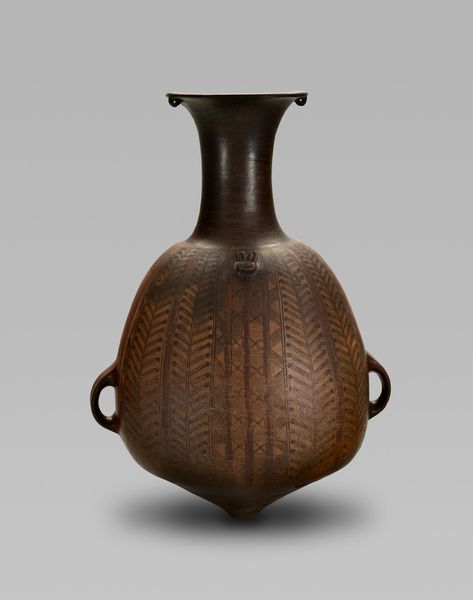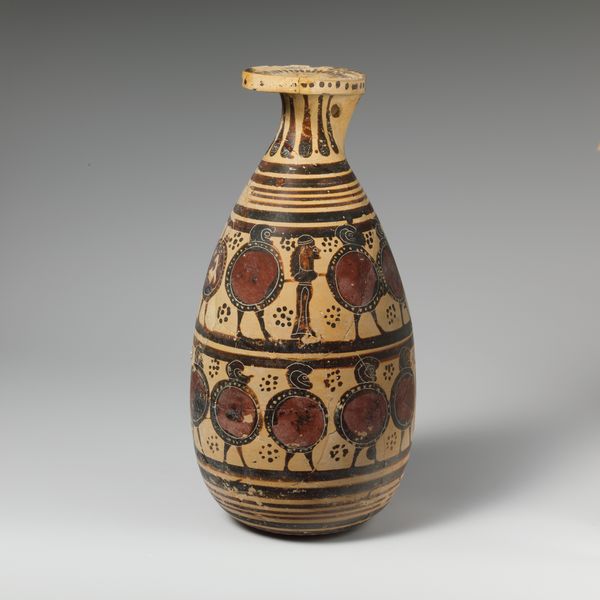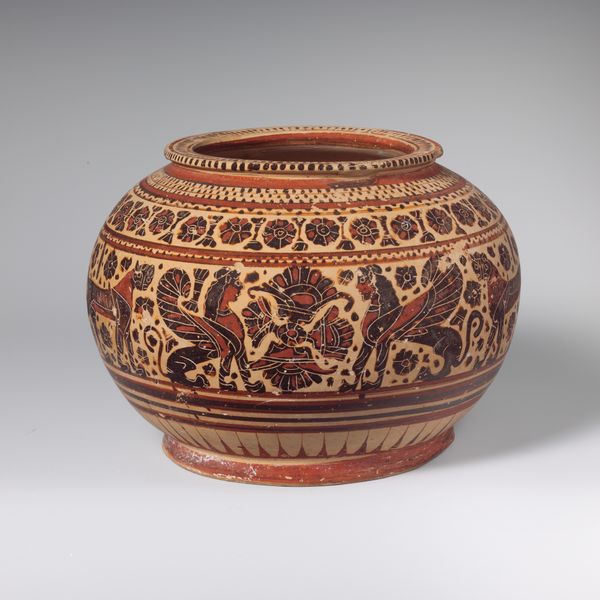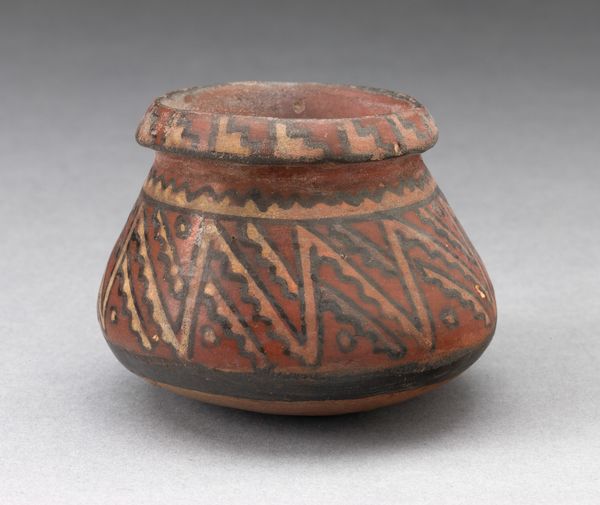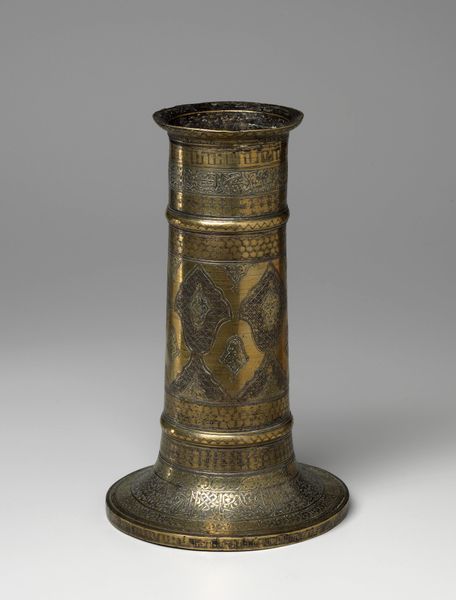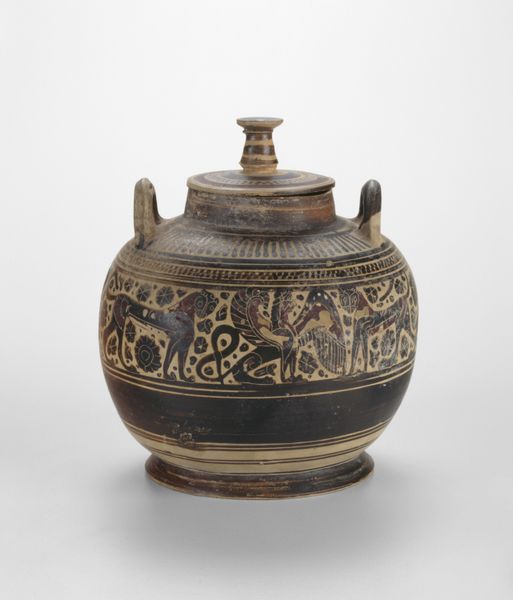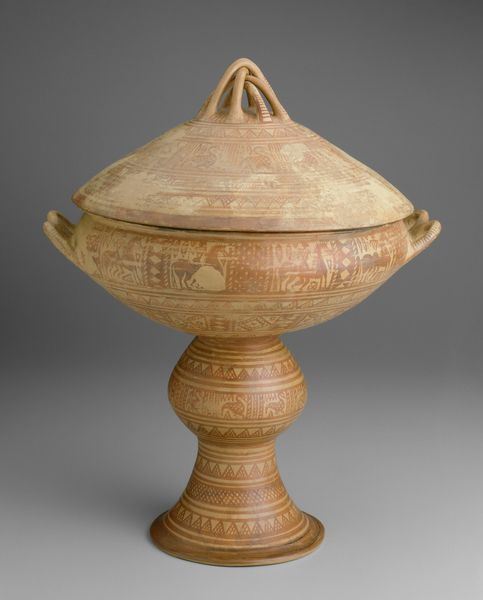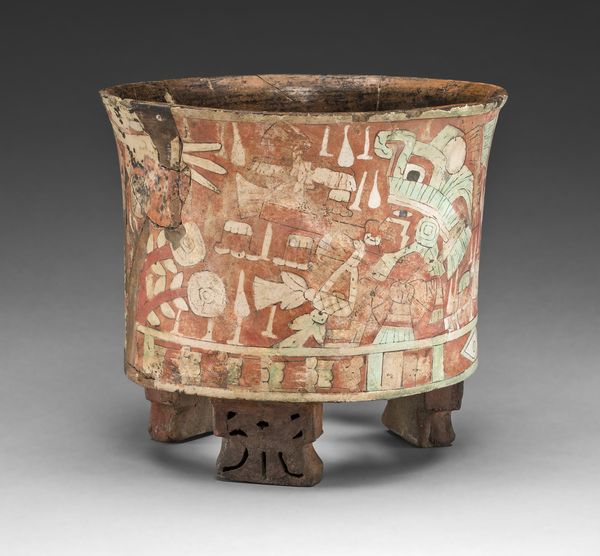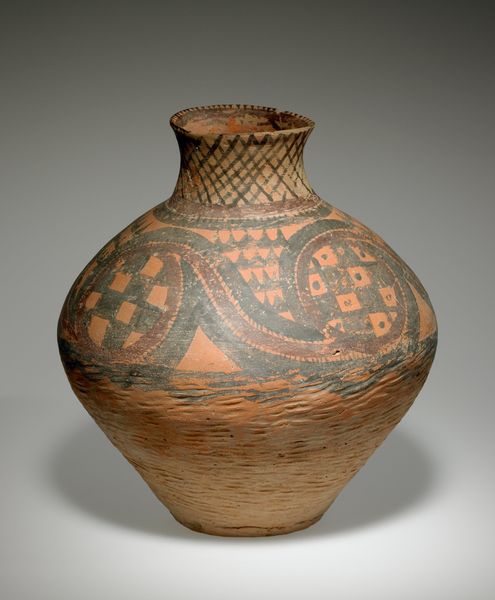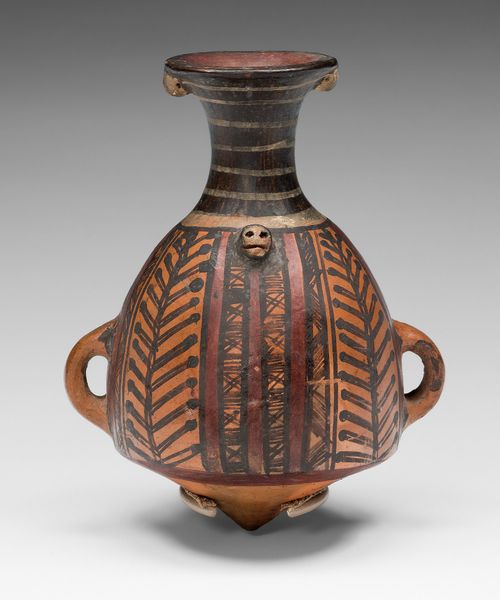
carving, wood
#
carving
#
geometric
#
wood
#
indigenous-americas
Dimensions: 35.6 × 34.3 × 27.3 cm (14 × 13 1/2 × 10 3/4 in.)
Copyright: Public Domain
Editor: This is the Penobscot Birchbark Pail, crafted around 1760, and residing at the Art Institute of Chicago. It’s a fascinating vessel, almost sculptural in its presence. What I immediately notice are the repeating decorative motifs etched onto the bark. What can you tell us about it? Curator: The Pail gives us a glimpse into the world of the Penobscot people, its place within larger socio-economic shifts. In the mid-18th century, indigenous art increasingly engaged a European market. This vessel operates on dual planes – both as a functional container, and a signifier of cultural exchange, how would you define “decorative” here? Editor: I’d describe the patterns as ornamental, not serving a primary utilitarian purpose. They make it more attractive. How did this interplay with the European market influence Indigenous artistry at the time? Curator: Think about it. European patronage created an incentive to incorporate elements marketable to that demographic. Visual storytelling and geometric patterns become more prominent. However, it simultaneously served the function of cultural expression and preservation within the community. It is both indigeneous and accessible for the European market. Editor: So, it's a delicate balance between tradition and adaptation to survive socioeconomically, ensuring both the object’s function and its symbolic capital within different cultural contexts. Curator: Precisely. We see the influence museums and galleries have on Indigenous art as both preservers and potentially, re-interpreters, where narratives around ownership and influence continue. And ultimately, we’re still participating in this process of reception and re-interpretation today. Editor: This shifts the way I perceive the artwork entirely. It's a tangible artifact embedded in a much wider discourse surrounding Indigenous history. Curator: I'm glad to offer a new perspective and inspire new thoughts on indigineous artwork.
Comments
No comments
Be the first to comment and join the conversation on the ultimate creative platform.

